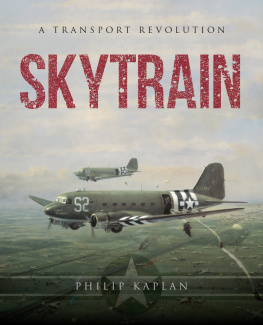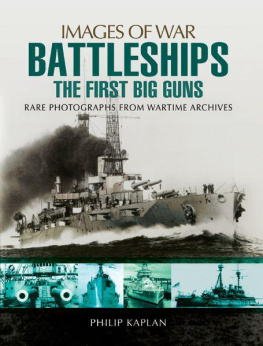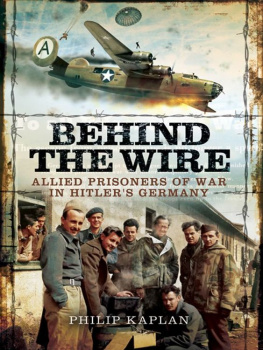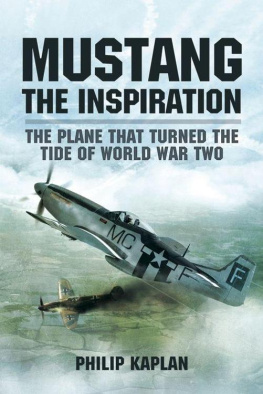Philip Kaplan - Building for Battle: Hitlers D-Day Defences
Here you can read online Philip Kaplan - Building for Battle: Hitlers D-Day Defences full text of the book (entire story) in english for free. Download pdf and epub, get meaning, cover and reviews about this ebook. year: 2017, publisher: Pen and Sword, genre: History. Description of the work, (preface) as well as reviews are available. Best literature library LitArk.com created for fans of good reading and offers a wide selection of genres:
Romance novel
Science fiction
Adventure
Detective
Science
History
Home and family
Prose
Art
Politics
Computer
Non-fiction
Religion
Business
Children
Humor
Choose a favorite category and find really read worthwhile books. Enjoy immersion in the world of imagination, feel the emotions of the characters or learn something new for yourself, make an fascinating discovery.

- Book:Building for Battle: Hitlers D-Day Defences
- Author:
- Publisher:Pen and Sword
- Genre:
- Year:2017
- Rating:3 / 5
- Favourites:Add to favourites
- Your mark:
- 60
- 1
- 2
- 3
- 4
- 5
Building for Battle: Hitlers D-Day Defences: summary, description and annotation
We offer to read an annotation, description, summary or preface (depends on what the author of the book "Building for Battle: Hitlers D-Day Defences" wrote himself). If you haven't found the necessary information about the book — write in the comments, we will try to find it.
Building for Battle: Hitlers D-Day Defences — read online for free the complete book (whole text) full work
Below is the text of the book, divided by pages. System saving the place of the last page read, allows you to conveniently read the book "Building for Battle: Hitlers D-Day Defences" online for free, without having to search again every time where you left off. Put a bookmark, and you can go to the page where you finished reading at any time.
Font size:
Interval:
Bookmark:
PHILIP KAPLAN

For Margaret
First published in Great Britain in 2017 by
Pen & Sword Military.
An imprint of
Pen & Sword Books Ltd
47 Church Street
Barnsley
South Yorkshire
S70 2AS
Copyright Philip Kaplan, 2017
ISBN 978 1 52670 540 2
eISBN: 978 1 52670 542 6
Mobi ISBN: 978 1 52670 541 9
The right of Philip Kaplan to be identified as Author of this work has been asserted by him in accordance with the Copyright, Designs and Patents Act 1988.
A CIP catalogue record for this book is available from the British Library.
All rights reserved. No part of this book may be reproduced or transmitted in any form or by any means, electronic or mechanical including photocopying recording or by any information storage and retrieval system, without permission from the Publisher in writing.
Pen & Sword Books Ltd incorporates the imprints of Pen & Sword Archaeology, Atlas, Aviation, Battleground, Discovery, Family History, History, Maritime, Military, Naval, Politics, Railways, Select, Transport, True Crime, Fiction, Frontline Books, Leo Cooper, Praetorian Press, Seaforth Publishing, Wharncliffe and White Owl.
For a complete list of Pen & Sword titles please contact
PEN & SWORD BOOKS LIMITED
47 Church Street
Barnsley,
South Yorkshire,
S70 2AS,
England
E-mail:
Website: www.pen-and-sword.co.uk
Book design: Philip Kaplan


By summer 1942 there was war all over the world; it was not a good year for the Allies and everywhere British and Commonwealth troops fought they lost. Russia was on its heels as Adolf Hitlers Nazi forces were advancing in the Caucasus, and the Americans were still reeling from their losses in the Philippines and at Pearl Harbor. Allied prospects seemed to range from bleak to hopeless. And there was a wide-spread belief among the British people, their military leaders, and the U.S. military Chiefs of Staff that the development and launch of a second front in Europe was both essential and urgently required. Since June 1941 the Russians had been pressing the Western Allies for that new front. The Russian Ambassador to Great Britain, Ivan Maisky, began campaigning for it, urging the British Foreign Secretary Anthony Eden to do something. Josef Stalin, the Russian leader, took up the case in July asking the Allies to mount a new offensive in northern France. His objective was to divert some of German Chancellor Adolf Hitlers invading army divisions from their activities on the Eastern Front in the Soviet Union, to take some of the pressure there off the Russians. Or, in lieu of implementing such a new front, he implored the British to send at least twenty-five fighting divisions to join the action on that Eastern Front. It was there that the Allies were facing perhaps their greatest challenge to that point in the war. The gigantic armies of Nazi Germany and Soviet Russia were engaged in a savage fight to the death, with the Russians seemingly unable to reverse the Nazi offensive. Stalin, together with the Western Allies, feared the possibility (some thought probability) of a Russian military collapse which would bring down the entire Allied war effort.
In July British Prime Minister Winston Churchill pointed out a few harsh realities to the Soviet Premier, that the German enemy had positioned forty divisions in France that Britain had more than 400,000 soldiers involved in combat against Field Marshal Erwin Rommels Afrika Korps in the Western Desert and that the entire Channel coast line of France bristled with cannon, barbed wire, pillboxes and beach mines making such an attempted landing a bloody repulse. Stalin was unmoved by those facts. Even the American President Franklin D. Roosevelt was applying pressure on Churchill in March 1942. Roosevelt said he was becoming more and more interested in the establishment of a new front this summer on the European continent. In somewhat more than a thinly-veiled threat / promise, Roosevelt and the senior American naval and military chiefs indicated that unless the Allies quickly developed and launched a new offensive in the West, the U.S. would have to refocus the bulk of its war effort on the Pacific war against the Japanese. At that point the general public in both Britain and the United States strongly favoured a new offensive in support of the beleaguered Russians, staging mass rallies in London and New York in April to express that support. The cry was A Second Front Now.

foreground, left to right: U.S. Generals George Patton, Omar Bradley, and British Field Marshal Bernard Montgomery.

A Focke-Wulf Fw-190 fighter on a French airfield;

German Chancellor Adolf Hitler.
Churchill would later write in his war memoirs: I thought it most important that a large-scale operation should take place this summer, and military opinion seemed unanimous that until an operation on that scale was undertaken, no responsible general would take the responsibility of planning the main offensive In discussion with Admiral Mountbatten it became clear that time did not permit a new large-scale operation to be mounted during the summer (after Rutter had been cancelled [initially]), but that Dieppe could be remounted (with the new code-name Jubilee) within a month, provided extraordinary steps were taken to ensure secrecy. For this reason no records were kept but, after the Canadian authorities and the Chiefs of Staff had given their approval, I personally went through the plans with the C.I.G.S., Admiral Mountbatten and the Naval Force Commander, Captain J. Hughes-Hallett.
What resulted from that pressure exerted upon the British PM was Operation Jubilee, which was to be a sort of mini-invasion exercise in advance of an eventual full-scale invasion on the European continent. It was planned to be an armed reconnaissance, a test of the capability of British amphibious forces supported by Royal Air Force fighters, to capture and briefly hold a French port on the English Channel coast. The objective was Dieppe and the raid was scheduled to launch during the night of 18-19th August, having been postponed from 7th July due to unfavourable weather conditions, and then deferred indefinitely following a German fighter-bomber attack on the troopships and other vessels of the supporting fleet assembled mainly in the Solent. After that attack it was thought by the Allied commanders that, having lost the element of surprise on which the success of the operation had depended, with two of the troopships having been damaged and not readily repairable, and the entire operation facing unsettled weather, it was decided to again postpone the operation and disperse the men and ships.
Font size:
Interval:
Bookmark:
Similar books «Building for Battle: Hitlers D-Day Defences»
Look at similar books to Building for Battle: Hitlers D-Day Defences. We have selected literature similar in name and meaning in the hope of providing readers with more options to find new, interesting, not yet read works.
Discussion, reviews of the book Building for Battle: Hitlers D-Day Defences and just readers' own opinions. Leave your comments, write what you think about the work, its meaning or the main characters. Specify what exactly you liked and what you didn't like, and why you think so.














